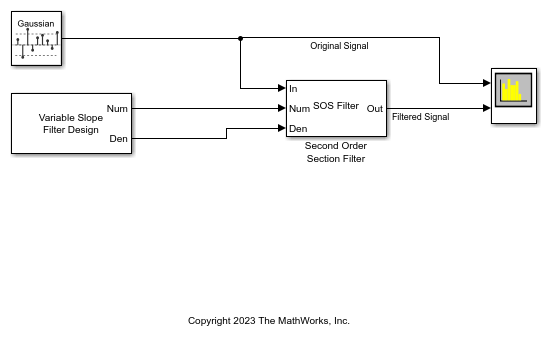Variable Slope Filter Design
Libraries:
Audio Toolbox /
Filters
Description
The Variable Slope Filter Design block designs a lowpass or highpass filter with the specified slope and cutoff frequency. The block outputs filter coefficients of cascaded second-order section (SOS) filters, which you can use with the Second-Order Section Filter block to filter audio signals. You can tune the filter parameters during simulation.
Examples
Ports
Input
Output
Parameters
Block Characteristics
Data Types |
|
Direct Feedthrough |
|
Multidimensional Signals |
|
Variable-Size Signals |
|
Zero-Crossing Detection |
|
Algorithms
References
[1] Orfanidis, Sophocles J. "High-Order Digital Parametric Equalizer Design." Journal of the Audio Engineering Society. Vol. 53, November 2005, pp. 1026–1046.
Extended Capabilities
Version History
Introduced in R2024a

